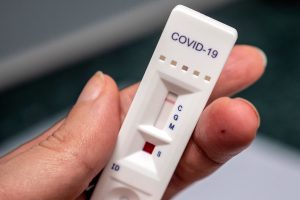The Science Behind Baby Talk: Infant Language Development
Research has shown that baby talk can play a crucial role in infant language development. Studies suggest that infants are more attentive to and better able to process IDS than ADS. The exaggerated sounds and rhythms of baby talk capture infants’ attention more effectively and help them distinguish between different phonetic elements of speech. According to one study, IDS can enhance phonetic learning in infants as young as 7 months old.
Benefits of Baby Talk
One of the key benefits of baby talk is its ability to help infants discern phonetic differences. Research indicates that the exaggerated articulation in IDS makes it easier for infants to perceive and learn the sounds of their native language. Another study in The Journal of Child Language found that infants exposed to IDS showed improved phonetic discrimination compared to those who heard ADS.
Improved Vocabulary Acquisition
Baby talk also appears to boost vocabulary development. The repetition and simplification of words in IDS can aid in word recognition and understanding. It was found that infants who were regularly exposed to baby talk had larger vocabularies by the age of 24 months compared to those who primarily heard ADS.
Social Bonding and Emotional Connection
Baby talk is not just about language; it also plays a significant role in social bonding between parents and infants. The exaggerated facial expressions and tones used in IDS can help establish a strong emotional connection. This bonding is crucial as it creates a safe and engaging environment for infants to explore language.
Better Engagement and Interaction
Infants are naturally drawn to the melodious and varied tones of baby talk. This increased engagement can lead to more frequent and meaningful interactions between parents and infants, further promoting language development. Research indicates that infants exposed to more IDS at nine months had better language skills at 18 months.
The Case for Adult Speech
While baby talk has its advantages, some experts argue that adult speech also plays a vital role in language development. ADS exposes infants to more complex sentence structures and a richer vocabulary, which can be beneficial as they grow older.
Adult speech introduces infants to a wider range of vocabulary and more complex grammatical structures. This exposure can be crucial as children progress from babbling to forming sentences. ONe study found that infants who were exposed to a mix of IDS and ADS showed more advanced language skills at 30 months old than those who were primarily exposed to IDS.
Using adult speech provides infants with a realistic context of how language is used in everyday communication. It can help them understand conversational norms and the pragmatic aspects of language, such as turn-taking and responding appropriately to questions. Research in Cognition indicates that exposure to ADS helps infants develop better pragmatic language skills, which are essential for effective communication.
Finding a Balance
Given the benefits of both baby talk and adult speech, many experts recommend a balanced approach. Integrating both IDS and ADS can provide infants with the advantages of phonetic learning and vocabulary development from baby talk, as well as the exposure to complex language and real-world context from adult speech.
Practical Tips for Parents
- Mix It Up: Use both baby talk and adult speech in everyday interactions with your infant. This combination can cater to their immediate learning needs and prepare them for future language challenges.
- Engage in Conversations: Even if your infant is not yet speaking, engaging them in conversations can be beneficial. Describe what you are doing, ask questions, and encourage them to respond in their way.
- Read Aloud: Reading to your infant using both baby talk and adult speech can enhance their exposure to language. Choose books with repetitive phrases and rich vocabulary to maximise benefits.
- Be Responsive: Pay attention to your infant’s vocalisations and respond to them. This interaction reinforces their attempts at communication and encourages further language development.
Early Language Exposure and Outcomes
Statistics from a large-scale study by the National Institute of Child Health and Human Development (NICHD) reveal that children who are frequently spoken to using a mix of IDS and ADS tend to have better language outcomes. The study tracked over 1,200 children from infancy to age three and found that early language exposure significantly correlated with higher language skills later on.
Word Gap and Socioeconomic Factors
Research has shown that there is a significant “word gap” between children from different socioeconomic backgrounds. A study by Hart and Risley (1995) found that by age three, children from wealthier families heard about 30 million more words than those from lower-income families. This gap can have long-term effects on language development and academic success. Utilising both IDS and ADS can help bridge this gap by providing diverse language exposure.
The Role of Technology in Language Development
In today’s digital age, technology also plays a role in language development. Educational apps and videos can be valuable tools, but they should complement, not replace, direct human interaction. Studies indicate that infants learn best from live interactions rather than passive media consumption. The American Academy of Pediatrics recommends limited screen time for infants and encourages parents to focus on direct engagement and conversation.
The debate between baby talk and adult speech in infant language development highlights the importance of varied linguistic input. Both methods have distinct advantages that can complement each other. While baby talk enhances phonetic learning and early vocabulary acquisition, adult speech exposes infants to complex language structures and real-world communication. By balancing both approaches, parents can support their child’s language development more effectively.
References
- Kuhl, P. K., et al. (2003). Infants show a facilitation effect for native-language phonetic perception after exposure to infant-directed speech. Developmental Science, 6(1), 5-18.
- Liu, H. M., Kuhl, P. K., & Tsao, F. M. (2003). Acoustic analysis of lexical tone in Mandarin infant-directed speech. Journal of Child Language, 30(3), 587-608
- Weisleder, A., & Fernald, A. (2013). Talking to children matters: Early language experience strengthens processing and builds vocabulary. Infancy, 18(6), 567-590.
- Ramirez-Esparza, N., Garcia-Sierra, A., & Kuhl, P. K. (2014). Look who’s talking: Speech style and social context in language input to infants are linked to concurrent and future speech development. Psychological Science, 25(9), 1992-2000
- Schwab, J. F., & Lew-Williams, C. (2016). Language learning, socioeconomic status, and child-directed speech. Cognition, 149, 1-11.
- NICHD Early Child Care Research Network. (2005). Child care and child development: Results from the NICHD Study of Early Child Care and Youth Development. New York: Guilford Press.
- Hart, B., & Risley, T. R. (1995). Meaningful Differences in the Everyday Experience of Young American Children. Paul H Brookes Publishing.
- American Academy of Pediatrics. (2016). Media and young minds. Pediatrics, 138(5), e20162591.












